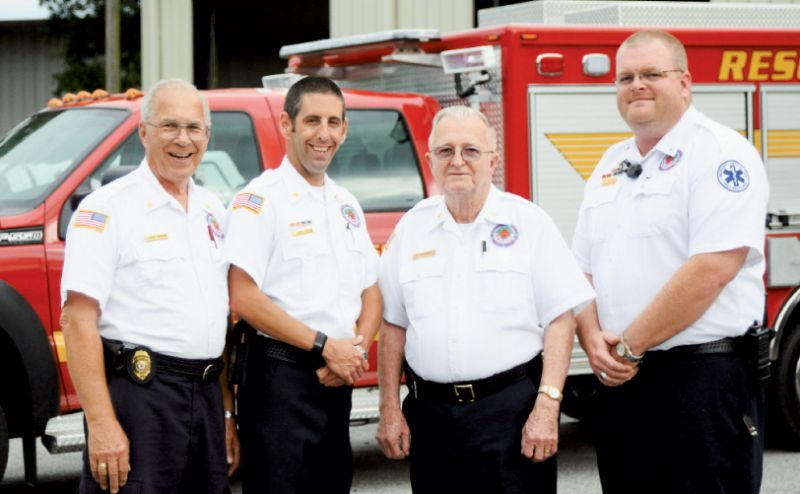
Man Power: (Left to right) Assistant chiefs Lamar Watkins and Trae Wright, chief Bobby Herbert, and deputy chief Brian Hinton head up the squad, which Herbert helped found in 1962—he’s on the far left in a photo that ran in an area newspaper that year (top).
Rehabilitation trucks. Jet Skis. ATVs. An urban search and rescue trailer. An air boat. Heavy-duty rescue trucks. An articulating crane. Extrication equipment. Amphibious vehicles. The Charleston County Rescue Squad fleet sounds like it traveled right off the pages of a Justice League comic book. And the 43-member force possesses a catalog of extraordinary powers to match—marine response, swift-water rescue, vehicle extrication, high-angle rescue, land search, fatality transport, large animal rescue. Only this team of superheroes isn’t fictional.
The crew stands at the ready every day and night to be dispatched by the Consolidated 911 Center....
From a gang of do-gooders armed with a panel van and some hand tools in 1962, the all-volunteer group has evolved into one of the best-equipped companies in the state. Now, the crew stands at the ready every day and night to be dispatched by the Consolidated 911 Center as backup for Charleston County emergency services or as the lead on certain specialty missions. A quick perusal of recent newspaper headlines turns up reports of these brave rescuers locating missing children and saving distressed boaters. While the squad used to primarily field calls involving motorists stuck in wrecked, flooded, or rolled vehicles, “we conduct more water rescues than anything else right now,” says assistant chief Trae Wright, who also works full-time as a flight medic. That means responding to harrowing situations like sinking vessels, stranded and injured boaters, and missing swimmers.
With police, paramedics, firefighters, mechanics, electricians, military personnel, and construction workers among those on its roster, the charitable squad boasts a unique collection of talents. The one thing they all have in common? These selfless locals willingly risk their lives on donated time to keep the community safe—no cape required. “Volunteering can be hard on families. Dinners are missed. Holidays get interrupted. Between the training and rescue calls, this can be a full-time job,” explains Wright. “But I do it because if something were to happen to my family, I would want someone to help, to give them the best possible chance of survival.”